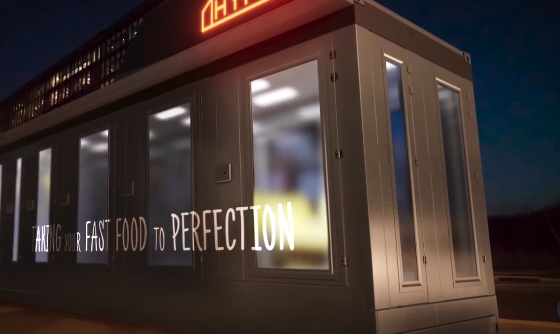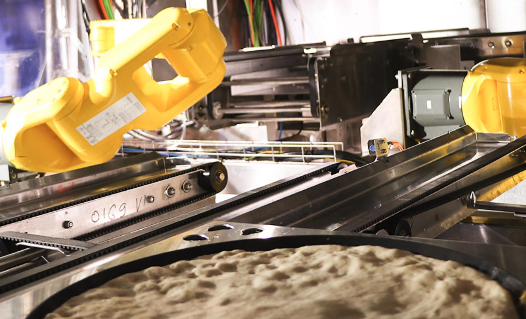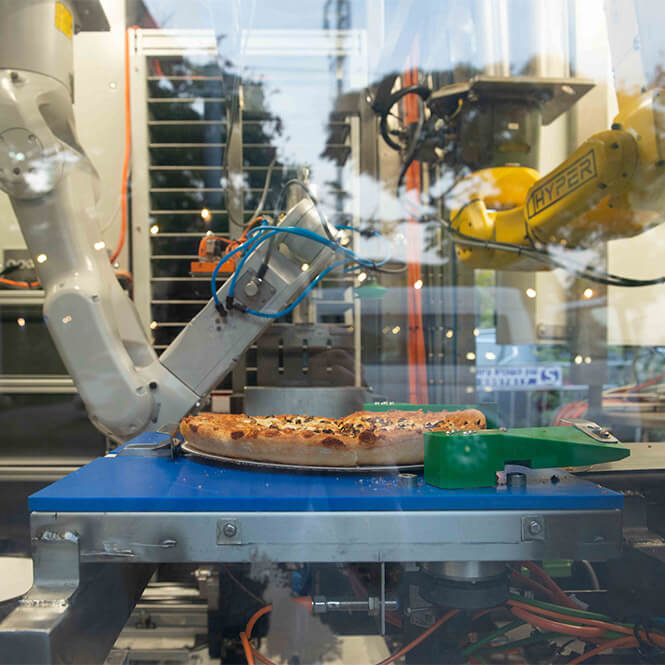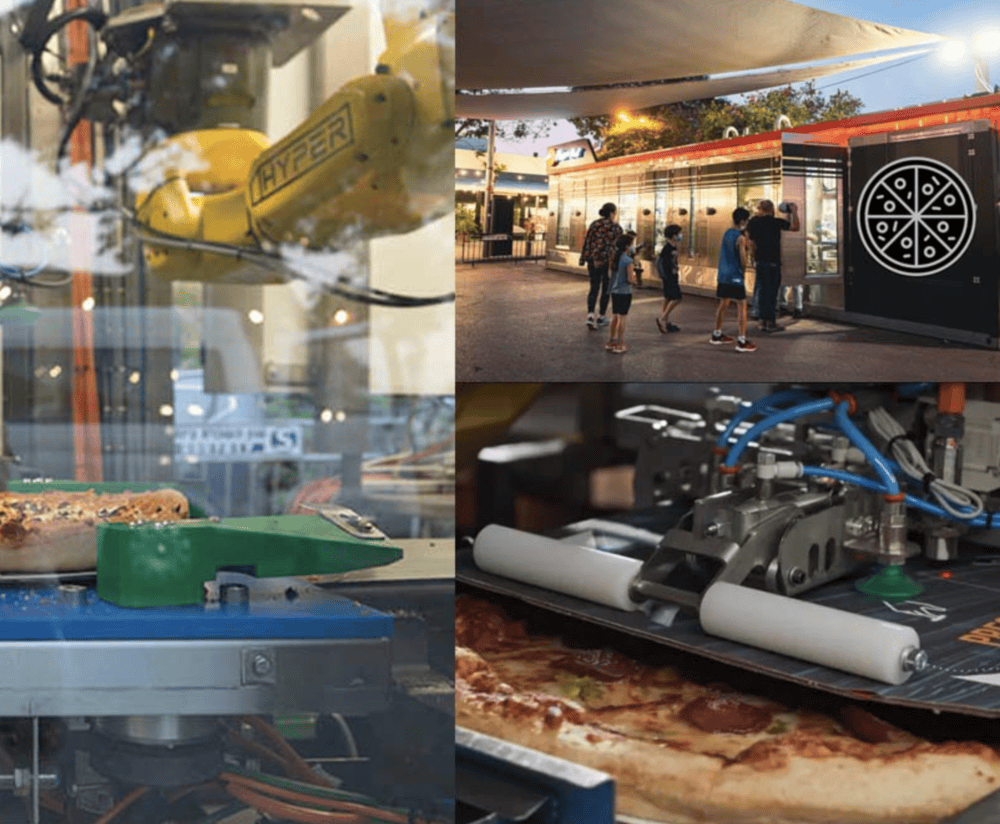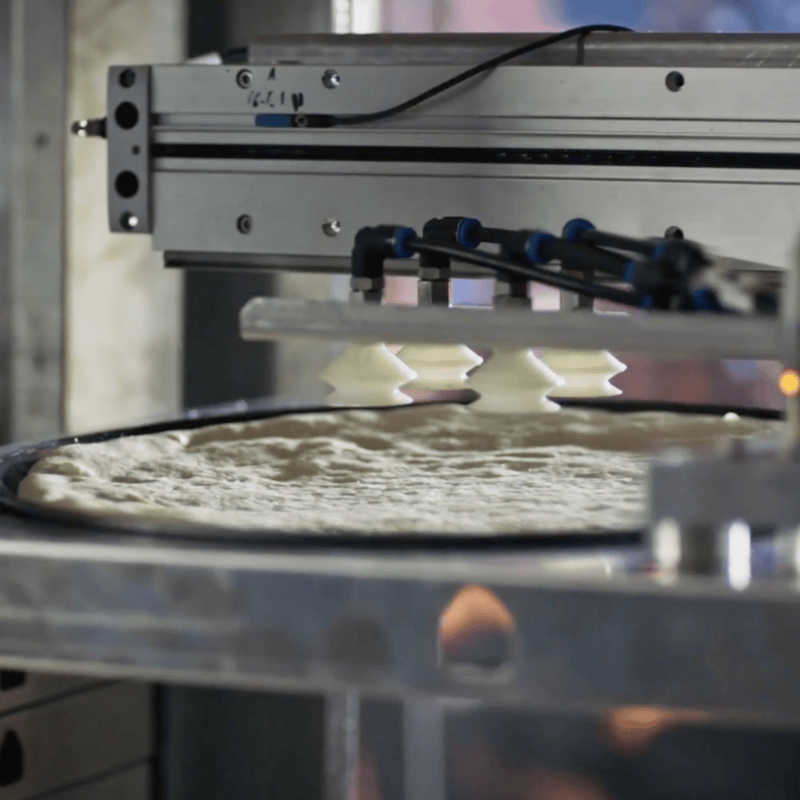You are watching a tectonic shift in service delivery. Robotic ice cream parlors are not a gimmick. They promise faster service, repeatable quality, measurable hygiene, and a deployment model that can grow like software. If you lead product, operations, or strategy for a fast-food brand, you need a clear lens on how these units compare to a traditional scoop shop, where the risks are, and how to measure payback.
The change is bigger than a mechanical arm behind glass. Robotic parlors combine machine vision, automated dispense mechanics, inventory AI, and modular, containerized real estate to turn dessert into a repeatable, remotely managed product. In pilots, Hyper-Robotics reports dessert service times cut in half and operational efficiency gains up to 30%, data you can review in the company knowledge base Hyper-Robotics knowledge base. External deployments such as Robomart’s work with major brands show the appetite for mobile, automated retail channels. Manufacturing and production automation case studies indicate similar throughput improvements when precise dispense and temperature control replace manual processes 3Laws robotics automation gains.
This topic requires a full 360 degree exploration to understand tradeoffs and opportunities. You will get clarity on what a robotic parlor is, where it makes the most sense, and why you should care now. You will read concrete examples, pilot data, and a practical roadmap so that you can brief your CEO, CFO, and head of operations with confidence.
Mini Table of Contents
- What, Where, Why: A Quick Framework
- What Is a Robotic Ice Cream Parlor?
- Five Ways Robotic Parlors Outperform Traditional Scoop Shops
- Technology Under the Hood
- Business Models and Deployment Options
- Measuring Success: KPIs and ROI
- Risks, Objections and Mitigation
- Use Cases and Quick Wins for Fast-Food Brands
- Key Takeaways
- FAQ
- About Hyper-Robotics
What, Where, Why
What: A robotic ice cream parlor is a self-contained, automated retail unit that prepares, portions, and dispenses frozen desserts without direct human handling. It uses robotics, machine vision, control systems, and integrated IoT telemetry to deliver consistent servings and audit trails Hyper-Robotics knowledge base.
Where: You deploy these units at high-traffic retail corridors, stadiums, college campuses, food halls, seasonal events, or as delivery-first micro-fulfillment hubs. They can be containerized 40-foot or 20-foot units or vehicle-based kiosks, as seen in mobile experiments that combine fleet logistics and automated dispensing Robomart and Unilever collaboration.
Why: The business case centers on speed, consistency, hygiene, and scalability. You reduce operational variability, extend service hours, and create a remote-managed channel that turns physical footprint into a software-driven asset. Research on restaurant labor pressures supports investment in automation where labor scarcity and wage inflation make staffed models costly National Restaurant Association report.
What Is a Robotic Ice Cream Parlor?
You should picture a stainless container, clinical but brand-forward, with an internal mechanical kitchen and a user-facing touchscreen or mobile ordering interface. Hyper-Robotics builds modular 40-foot and 20-foot units that integrate dozens of sensors, 20 AI cameras, automated dispensers, and real-time inventory systems Hyper-Robotics knowledge base. Orders arrive from web and mobile apps, the unit prepares a measured portion, inspects presentation with machine vision, and dispenses the product to the customer or a delivery courier.

Where human labor used to be required for scooping, topping, and cash handling, you now have deterministic processes. That means consistent portion weights, temperature logs for every composition, and a digital trail you can query during audits. If you value predictability, you will value the automated answer.
Five Ways Robotic Parlors Outperform Traditional Scoop Shops
Speed and Throughput
What you get: faster, predictable service metrics. Robotic dispensers eliminate variability in human motion and can run parallel tasks. Hyper-Robotics pilot data shows dessert service times cut in half, which matters if your peak hour demand spikes unpredictably and your delivery partners require guaranteed ready times Hyper-Robotics pilot metrics.
Where it pays off: high-traffic corridors, stadiums, and sites that feed delivery fleets. For example, a stadium vendor processing 2,000 orders in an evening with a consistent 90 second average service time is far easier with automation than with a variable, manual line. Those numbers translate directly into revenue by increasing the orders you can handle per hour without adding the same headcount.
Why it matters to you: Each minute shaved from service time increases throughput and reduces queue drop-off. Faster service improves the reliability of integrated delivery slots and reduces late deliveries and negative reviews. If your brand sells by the hundred or thousand each day, throughput is revenue.
Consistency and Quality Assurance
What you get: repeatable portions, presentation checks, and recipe enforcement. Machines measure by weight, temperature, and timing, and validate output with camera-based inspection. That makes each branded serving identical regardless of who is on duty.
Where it pays off: franchise networks and delivery-first brands where consistency underpins brand promise. When a customer orders a particular sundae at noon in New York and at nine p.m. in Los Angeles, they expect the same experience.
Why it matters to you: Consistent quality reduces customer complaints, chargebacks, and negative reviews. It also provides the data to tune recipes and optimize A/B tests of menus quickly because you remove human variability from the signal. Use the camera and telemetry logs to run product experiments and iterate recipes at scale.
Hygiene and Food Safety
What you get: minimized human contact, continuous temperature monitoring, and logged sanitation cycles. Automated systems can run mechanical cleaning, steam, or ultraviolet cycles and record validation data for each clean, which makes regulatory audits simpler.
Where it pays off: healthcare-adjacent sites, airports, and any operation that must demonstrate traceability. In environments where perceived hygiene affects purchase intent, automated sanitation becomes a competitive advantage.
Why it matters to you: You lower contamination risk and create defensible audit logs. That reduces regulatory friction and can lower insurance exposure, while also appealing to a customer base that values contactless service. For design and sanitation best practices, review manufacturing and robotics sanitation approaches used in production automation 3Laws robotics automation gains.
Scalability and Rapid Deployment
What you get: plug-and-play units you can ship, commission, and network. A containerized parlor can be installed with minimal site work, and a fleet can be managed centrally with remote updates and menu pushes.
Where it pays off: rapid market tests, seasonal rollouts, and last-mile expansion. Robomart’s mobile approach with Unilever shows one avenue, while stationary container units offer faster setup for dense urban corridors Robomart and Unilever collaboration.
Why it matters to you: You can expand the brand footprint without the traditional real estate and construction timeline. That lowers the time-to-revenue and gives you flexibility for market experiments and A/B testing at scale.
Cost Efficiency and Labor Dynamics
What you get: a shift from variable labor costs to predictable maintenance and software subscriptions. Automation reduces the number of front-line staff needed for repetitive tasks and changes your P&L dynamics.
Where it pays off: locations with high labor costs, chronic staffing shortages, or volatile shift patterns. You also gain by redeploying remaining staff to higher-value roles such as guest experience and brand activation.
Why it matters to you: The payback is a function of throughput and utilization. In many pilot scenarios CapEx is offset by labor savings and extended operating hours inside 12 to 36 months, depending on demand and local labor economics Hyper-Robotics pilot metrics. Your finance team will want a scenario model that includes expected orders per hour, maintenance SLAs, and the cost of network operations.
Technology Under the Hood
Sensors and Machine Vision
What you get: dozens of sensors for temperature, weight, and mechanical state, plus multiple AI cameras to inspect portions and detect anomalies. Machine vision verifies presentation, topping placement, and can spot foreign objects.
Where it pays off: quality control and safety workflows. Cameras also feed training data to improve dispense algorithms over time, producing continuous operational improvement.
Why it matters to you: These subsystems turn sensory data into defensible decisions. If a unit flags a deviation, you can automatically quarantine product, notify operations, and correct recipes remotely.
Inventory and Forecasting AI
What you get: real-time ingredient tracking, demand forecasting, and automated replenishment alerts. Forecasting models use historical sales, local weather, and event calendars to predict demand and optimize replenishment.
Where it pays off: minimizing waste, planning replenishment runs, and preventing out-of-stock events. In automated dessert operations, better forecasting can reduce waste by double digits when models are tuned with local data 3Laws robotics automation gains.
Why it matters to you: Reducing waste and supply disruptions directly improves margins. The same models let you schedule maintenance when unit demand is lowest, maximizing uptime.
Autonomous Sanitation and Cleaning
What you get: scheduled cleaning cycles that use mechanical brushes, heat, steam, and ultraviolet light, while logging completion and effectiveness for audits. Some systems reduce chemical use by relying on heat and enclosed cycles.
Where it pays off: compliance with health codes and brand hygiene standards. You can show regulators a clean data trail rather than handwritten logs.
Why it matters to you: Auditable sanitation lowers risk, and automated cleaning reduces the human labor needed for deep cleans. That contributes to the hygiene story you present to customers and regulators.
Cybersecurity and Remote Maintenance
What you get: secure firmware updates, encrypted telemetry, and remote diagnostic tools. For enterprise adoption, security controls, penetration testing, and incident response plans are non-negotiable.
Where it pays off: any cloud-connected fleet. You need to prevent tampering, ensure integrity of recipes, and protect customer data.
Why it matters to you: Compromise of a food automation unit is a reputational and legal risk. Ensure your vendor provides SOC2-like controls, signed firmware, and SLAs for security incidents.
Business Models and Deployment Options
What you get: several commercial approaches. You can buy units outright, lease them, or contract a managed service where the vendor operates the fleet under SLA. Hyper-Robotics supports API integrations into POS, loyalty, and delivery platforms to enable either owned or partner-operated strategies Hyper-Robotics knowledge base.
Where it pays off: franchise expansion benefits from leasing models to reduce upfront capital needs. Managed services suit brands that want rapid scale without building a large operations center.
Why it matters to you: Choose a model that aligns incentives. If you prefer predictable operating expense, a managed model or subscription is cleaner. If you control a large network and want asset ownership, buying may yield better long-term economics.
Measuring Success: KPIs and ROI
What you track: orders per hour, utilization hours per day, average ticket, waste reduction percentage, uptime, and cost per order. You also need qualitative measures such as customer satisfaction and brand perception.
Where to get the numbers: pilot data, vendor dashboards, and delivery partner reports. Hyper-Robotics published pilot metrics showing up to 30 percent efficiency gains and service time reductions that you can access in the pilot brief Hyper-Robotics pilot metrics.
Why it matters to you: Build a three-scenario ROI model: conservative, base, and aggressive. Include CapEx, maintenance subscription, ingredient savings from portion control, labor redeployment value, and incremental revenue from extended hours and delivery. That model will drive a board-level decision faster than vague promises.
Practical checklist for pilots:
- Lock down baseline metrics for 30 days before swap-in to measure delta.
- Agree SLAs and escalation paths for onsite service response times.
- Integrate loyalty and POS up front to capture full-funnel effects.
- Run concurrent A/B menu tests to validate recipe parity and margin impact.
- Schedule a four to eight week optimization window after commissioning before scaling.
Risks, Objections and Mitigation
What you should expect: customer skepticism, local regulatory hurdles, and initial capital demands. Vendors also have to prove uptime and provide rapid maintenance.
Where you will see friction: legacy franchise agreements, health department inspections, and unionized labor markets. A public pilot can become a lightning rod if poorly managed.
Why it is manageable: Pilot with clear guardrails. Start in test markets with existing demand and supportive local regulators. Use branded experiences to signal quality and involve culinary teams to validate recipes. Insist on SLAs, remote diagnostics, and local spare parts to protect uptime. Engage stakeholders early, including franchisees, labor reps, and local permitting authorities, to reduce surprises.
Use Cases and Quick Wins for Fast-Food Brands
What works fast: stadiums, amusement parks, and campuses where foot traffic is predictable and concentrated. Delivery-first deployments excel in dense urban neighborhoods where micro-fulfillment reduces last-mile time. Mobile models and stationary container units each have strengths. Use pop-ups and event-based rollouts to collect data and refine recipes quickly.
How to start: pick three sites with high baseline demand, run a simultaneous pilot across them, and compare the automated unit against matched staffed locations. Use the telemetry to quantify waste reduction, service time improvements, and labor redeployment value.

Real to life example:
A branded deploy in a college campus may show you can serve morning classes with a consistent menu and then shift to late-night delivery demand, increasing utilization and smoothing fixed cost per hour. Data from similar pilots can be found with mobile automated retail experiments Robomart and Unilever collaboration and production automation case studies 3Laws robotics automation gains.
Key Takeaways
- Pilot with a clear ROI model that includes throughput, labor delta, and waste reduction, and measure against baseline performance Hyper-Robotics pilot metrics.
- Prioritize hygiene and auditability, insisting on logged sanitation cycles and temperature records 3Laws robotics automation gains.
- Choose the commercial model that aligns incentives, whether ownership, lease, or managed services, and require SLAs for uptime and security.
- Use machine vision and telemetry to drive continuous menu optimization, not just automation for automation sake.
- Deploy first in concentrated, high-traffic sites to validate throughput and customer acceptance before scaling.
Bring your CFO a three-scenario model, your COO a pilot operations checklist, and your CTO a security and integration plan. When each leader sees concrete numbers, timelines, and SLAs, you move from speculation to execution.
Bring these materials to your next leadership meeting and ask for a committed pilot budget and a steering committee with clear success criteria. If you want, I can draft a one-page pilot brief with KPI templates and a CFO-ready ROI spreadsheet to bring to that meeting.
You are ready to decide whether to buy, lease, or partner, and you now have the vocabulary to ask the right questions.
Would you like a pilot brief and a finance-ready model tailored to your locations and order data?
FAQ
Q: Are robotic ice cream parlors hygienic enough for regulatory approval?
A: Yes, when designed and validated correctly. Automated units minimize human contact and provide logged sanitation cycles, temperature records and production traces that help during inspections. You should require vendors to provide audit logs, cleaning validation data and a HACCP-aligned protocol. Coordinate early with local health departments to pre-clear processes and submit sensor evidence during inspections.
Q: How quickly can a robotic parlor be deployed and start producing revenue?
A: Deployment times vary, but containerized units can be commissioned far faster than traditional storefronts. Depending on permitting and site readiness, you can often move from delivery to first order in weeks rather than months. Your revenue ramp will depend on location and marketing, but pilots frequently show meaningful orders within the first week if placed in a high-traffic area.
Q: What are the primary maintenance and uptime concerns?
A: Mechanical wear, refrigeration reliability and software glitches are the main issues. Negotiate SLAs with defined response times, remote diagnostics and local parts provisioning. Insist on historical uptime data and an escalation path with the vendor’s support team. A good remote monitoring system will preempt many failures by scheduling preventive maintenance.
Q: How should I measure ROI for a pilot?
A: Build scenarios that compare current costs to projected costs with automation. Include labor savings, incremental hours of operation, waste reduction, incremental delivery revenue and the vendor’s fees or CapEx amortization. Track actual orders per hour, average ticket, waste by weight and uptime during the pilot. This makes your board-ready case concrete and defensible.
Q: Will customers accept robotic parlors, or will they miss human interaction?
A: Acceptance varies by audience and presentation. Many customers enjoy the novelty, especially when the interface is smooth and the product is consistent. Preserve brand warmth through design, digital receipts and optional human ambassadors during early deployments. Use surveys and NPS to measure sentiment and iterate quickly.
About Hyper Food Robotics
Hyper Food Robotics specializes in transforming fast-food delivery restaurants into fully automated units, revolutionizing the fast-food industry with cutting-edge technology and innovative solutions.
Hyper-Robotics addresses inefficiencies in manual operations by delivering autonomous robotic solutions that enhance speed, accuracy, and productivity. Their robots solve challenges such as labor shortages, operational inconsistencies, and the need for round-the-clock operation, providing solutions like automated food preparation, retail systems, and kitchen automation.

